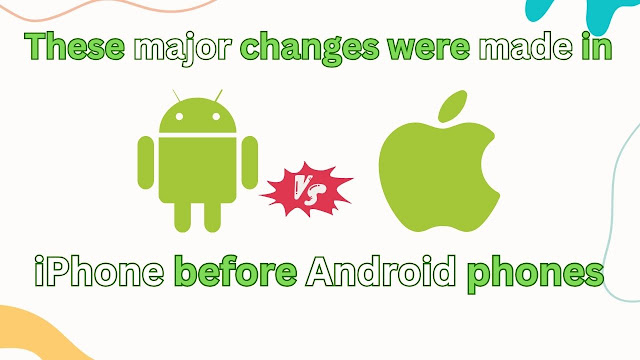From design to Corning Gorilla Glass feature, these major changes were made in iPhone before Android phones.
From design to Corning Gorilla Glass feature, these major changes were made in iPhone before Android phones.
iPhone vs. Android Steve Jobs announced the original iPhone in January 2007 and it became available for purchase in June. The first Android phone to hit the market after this was the T-Mobile G1 (HTC Dream) in September 2008. After launching the iPhone, other Android OEMs started copying the formula. The design of the HTC Dream was like the iPhone.
New Delhi, Tech Desk. Apple is preparing for its biggest event. The company will unveil the iPhone 15 series on September 12. This time the company can make many major changes in its upcoming iPhone 15 series.
If the report is to be believed, this time the company can present the iPhone 15 series with Type C. New color option can also be available. Today we are going to tell you about 4 such big changes that iPhone made before Android.
There were major changes in the design
Steve Jobs announced the original iPhone in January 2007, and it became available for purchase in June. The first Android phone to hit the market after this was the T-Mobile G1 (HTC Dream) in September 2008. After launching the iPhone, other Android OEMs started copying the formula.
The design of the HTC Dream was similar to the iPhone. While the size and design of many other smartphones have changed over time, the iPhone has generally remained the same since its release.
Introducing the Corning Gorilla Glass feature
One of the lesser-known facts about the iPhone is that it was the first iPhone to feature Corning Gorilla Glass. Despite Jobs introducing a plastic-screened iPhone in January 2007, consumer products had already switched to glass in June. Therefore, no iPhone released so far has had a plastic display.
While the T-Mobile G1 used Gorilla Glass, many Android OEMs released phones with plastic screens in their early days. We no longer see popular smartphones with plastic displays in the market, it took a while for Android phone manufacturers to make the switch completely.
Introducing 64-bit processors
Another major introduction of the iPhone was the 64-bit processor. Apple first packed its 64-bit A7 chip into the iPhone 5s in 2014. About a year later, HTC released the first 64-bit Android phone, the Desire 510. Today, most flagship phones pack more than 4GB of RAM, which would not have been possible if OEMs had stuck to 32-bit processors. Thanks to the 64-bit switch, our smartphones today started performing better despite their smaller size.
removal of physical sim
The iPhone 14 and iPhone 14 Pro models are the first smartphones in the US to eliminate the physical SIM card slot. While this controversial move has angered many users, it also inspires users to adopt new technology and makes it easier for users to get a SIM card slot. The card slot makes it easy to set up. Many telecom operators already allow users to download eSIM using applications

.jpg)
.jpg)

Comments
Post a Comment